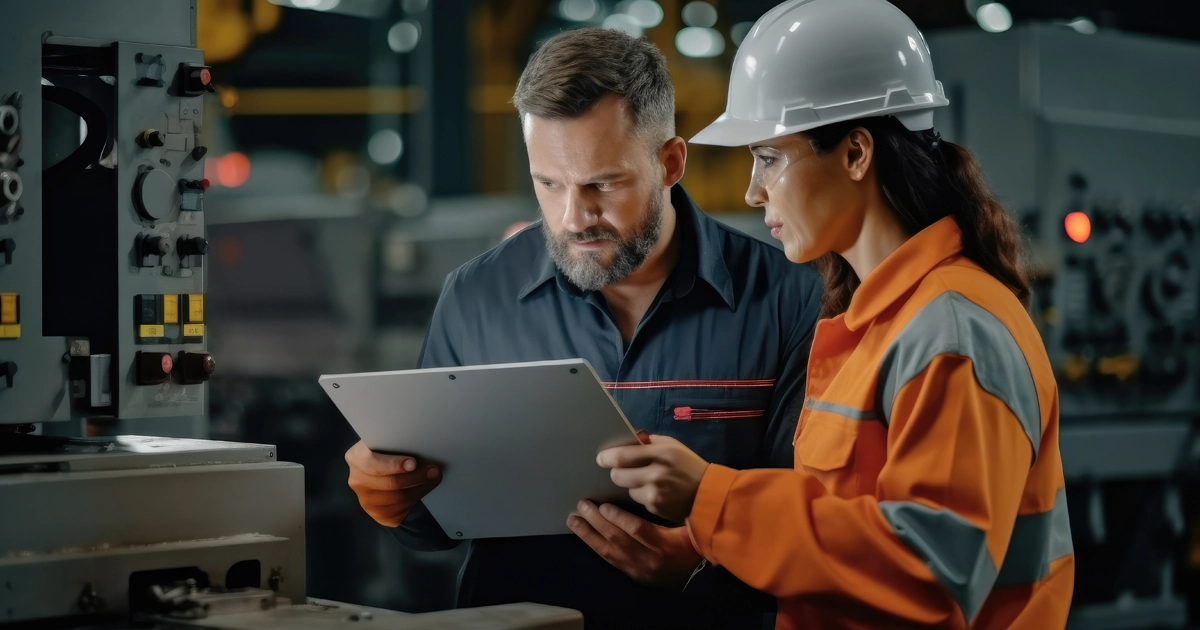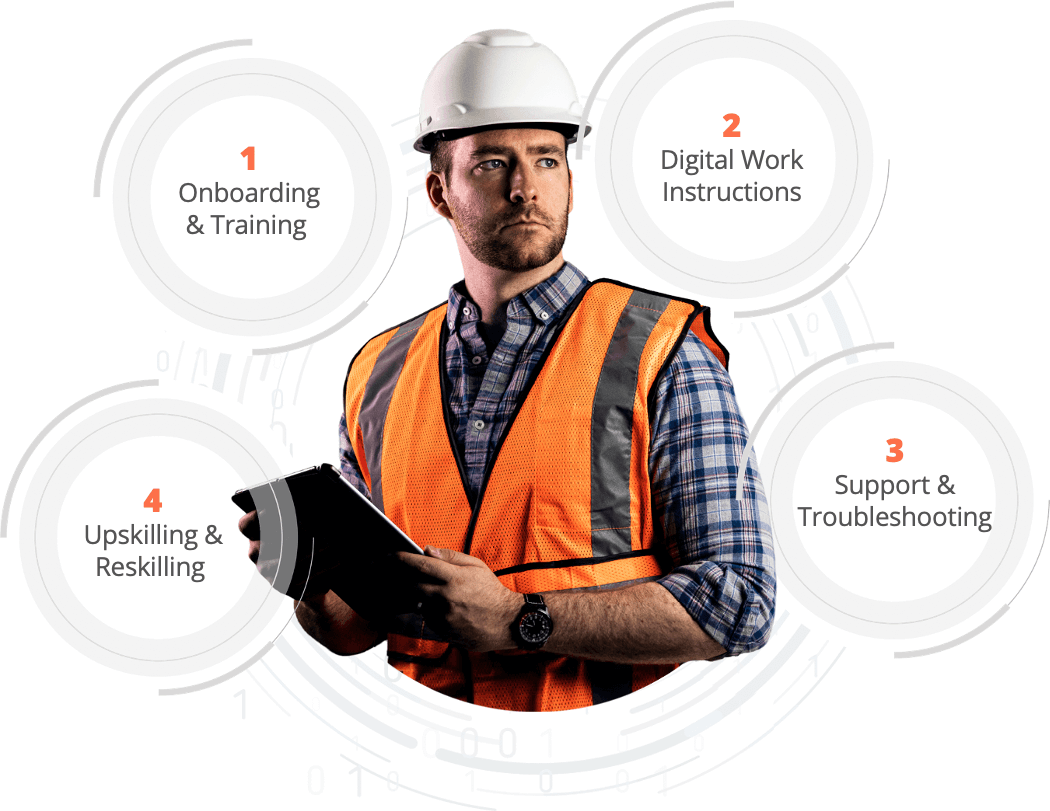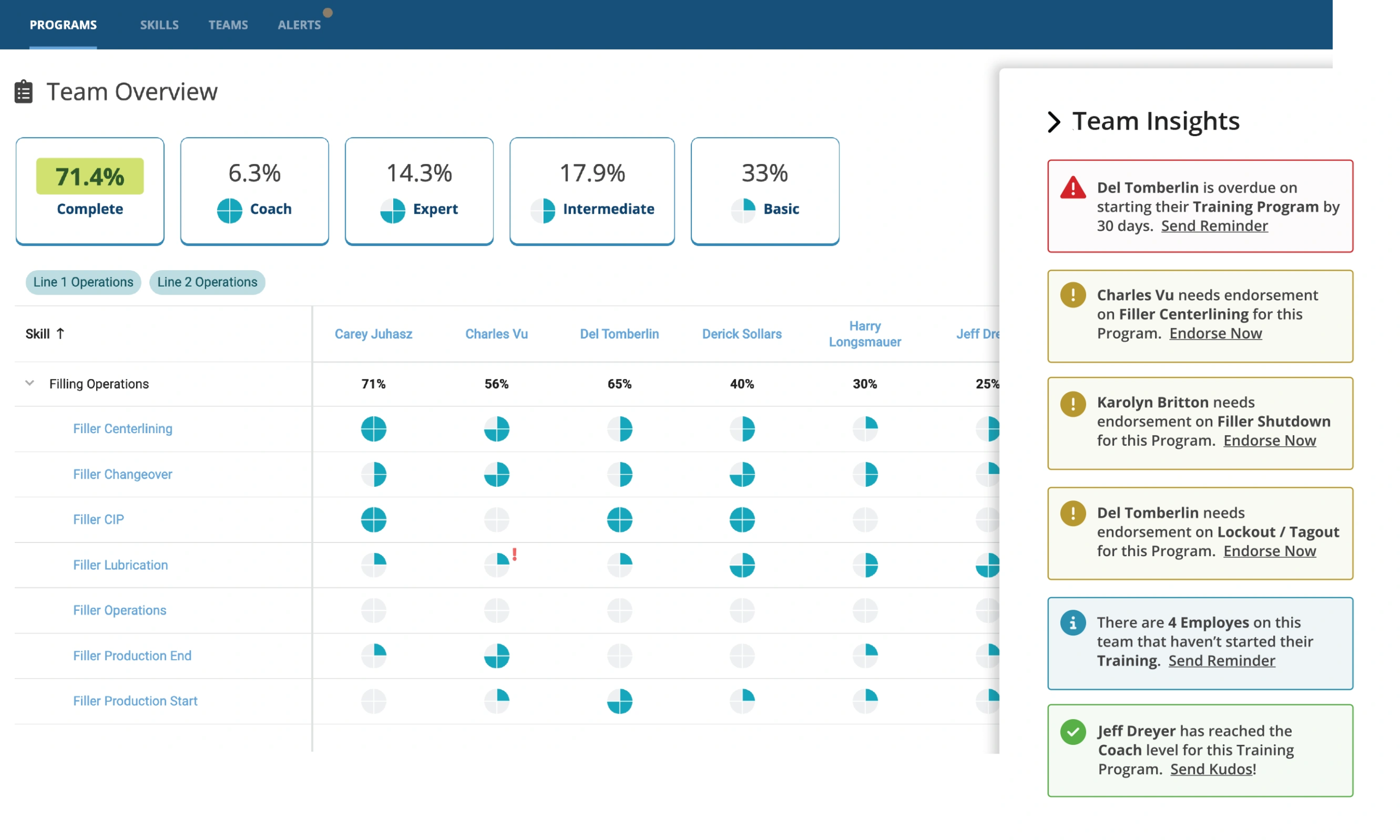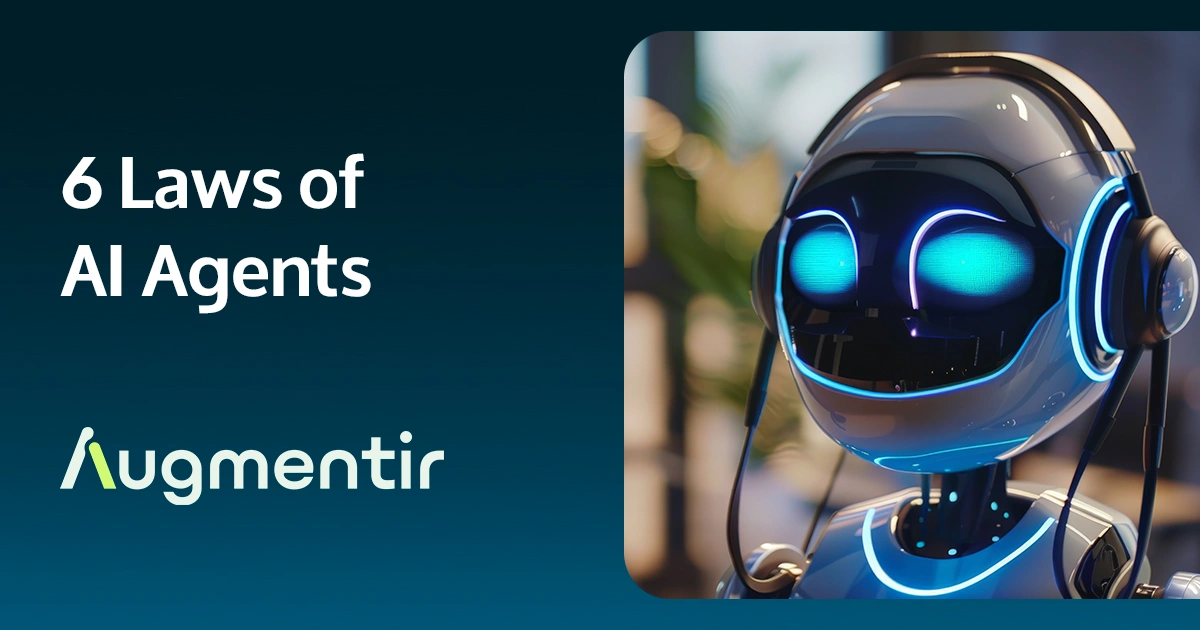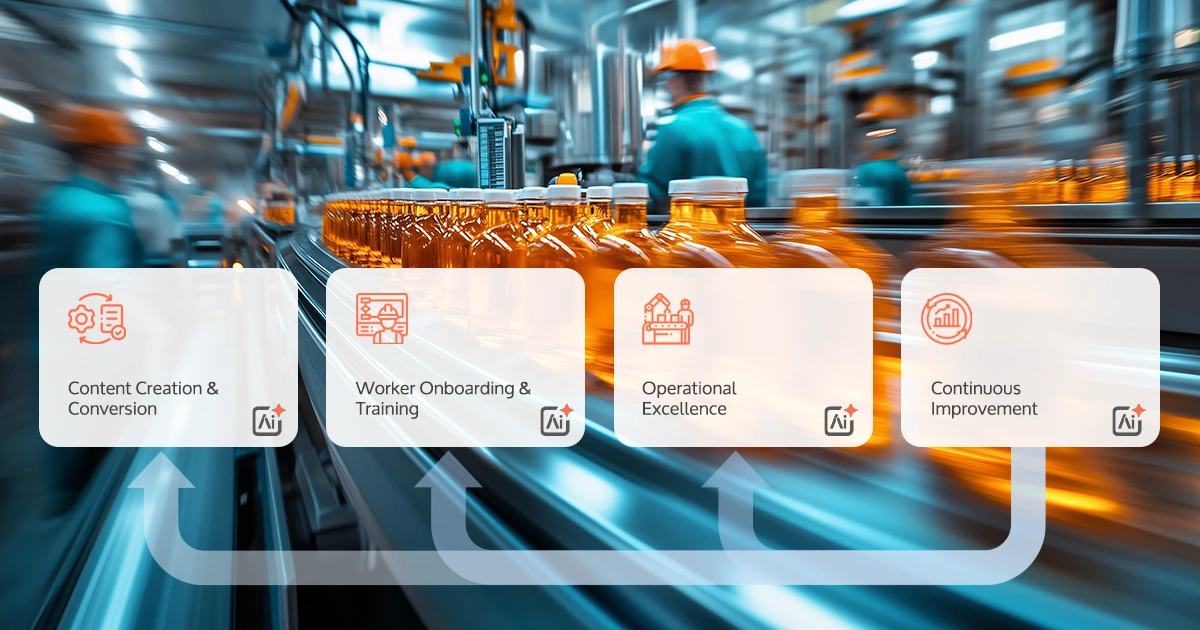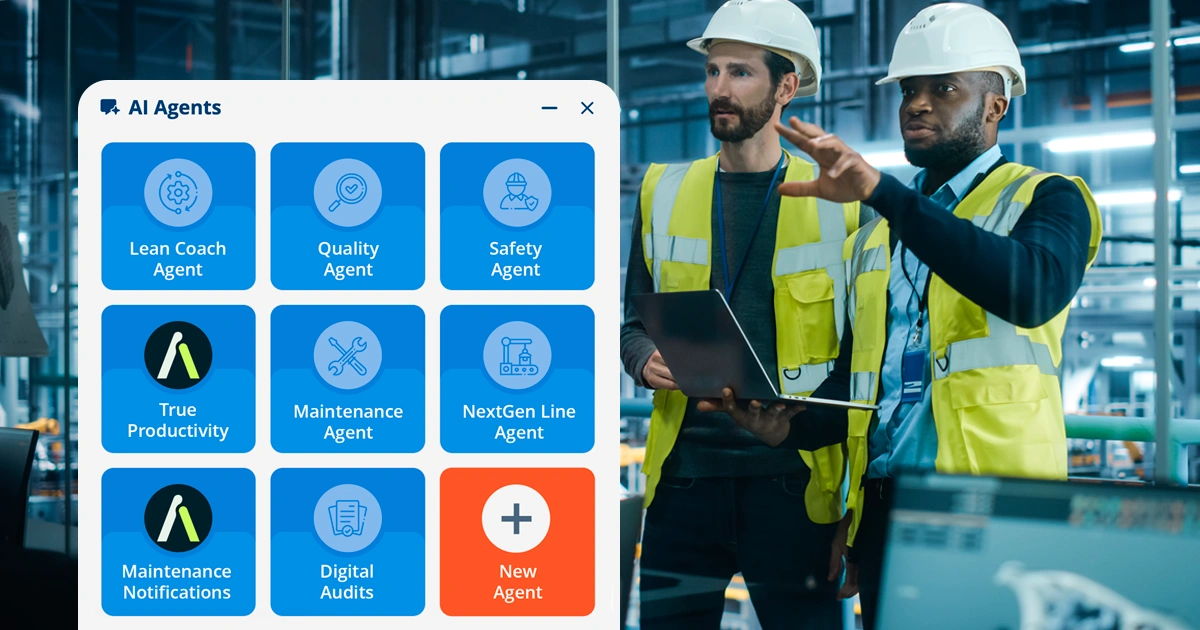Learn the differences between onboarding and training in manufacturing, their benefits, and how to improve them with continuous learning.
Onboarding and training are essential components of integrating new employees into a manufacturing environment. Research by Brandon Hall Group found that organizations with a strong onboarding process improve new hire retention by 82% and productivity by over 70%. Additionally, research from NAM and The Manufacturing Institute has found that manufacturing organizations invest an average of 51.4 hours per employee in training and are increasing overall investment in training by an average of 60% in response to the growing skilled labor crisis.
Onboarding and training are two key components of a skilled workforce that, while similar, serve different purposes and cover distinct aspects of the employment process.
Both processes are crucial, as onboarding ensures that employees understand the organization’s broader context, and training ensures that they have the expertise to contribute to the manufacturing processes and meet quality and safety standards.
A successful combination of effective onboarding and comprehensive training can lead to more engaged, skilled, and productive employees in the manufacturing industry. Unfortunately, according to Gallup, only 29% of new hires say they feel fully prepared and supported to excel in their role after their onboarding experience.
Read below to learn more about the differences between onboarding and training in manufacturing, why they are both critical to manufacturing success, the benefits of improving them, and how continuous learning strategies coupled with connected worker solutions can improve both and deliver impressive results.
- Breakdown of Onboarding and Training Differences
- Why are training and onboarding important to manufacturing success
- What are the benefits of improving training and onboarding in manufacturing
- How continuous learning and connected worker solutions improve training and onboarding in manufacturing
Breakdown of Onboarding and Training Differences
Onboarding in manufacturing is about orienting new hires to the company as a whole, while training is about equipping them with the specific skills and knowledge needed to perform their job functions effectively. Below a breakdown of the differences between onboarding and training in a manufacturing setting:
Onboarding
- Purpose: Onboarding integrates a new employee into the organization and its culture. It aims to familiarize employees with the company, its policies and procedures, and their roles within the organization.
- Focus: Onboarding focuses on introducing employees to the broader aspects of the company, such as its mission, values, and culture, as well as administrative and safety procedures.
- Duration: Onboarding is typically a short-term process, often lasting a few days, but could extend to a few months in certain manufacturing environments.
- Components: It may include activities like completing paperwork, understanding company policies, meeting the team, plant/site safety, and familiarizing a new hire with the physical workplace.
Training
- Purpose: Training in manufacturing is a more specific and in-depth process that imparts the knowledge, skills, and competencies necessary to perform the job effectively. It is task-oriented and aimed at ensuring that employees can carry out their roles proficiently.
- Focus: Training focuses on the technical aspects of the job, safety protocols, equipment operation, quality standards, and other job-specific skills.
- Duration: Training is an ongoing process and may vary in duration depending on the complexity of the role and the employee’s experience level.
- Components: Training tends to include hands-on instruction, demonstrations, practice exercises, and assessments to ensure that employees gain the necessary skills and knowledge.
Both initial onboarding and ongoing training can be implemented with mobile learning solutions that leverage connected worker technology and AI to provide workers with bite-sized, on-demand training modules that they can access on smartphones or tablets. These modules can be developed with customized learning paths that are focused on the type of tasks and work employees are doing on the factory floor.
Why are training and onboarding important to manufacturing success
Onboarding and training are crucial to manufacturing success for several reasons including safety, compliance, quality, and more. A well-trained manufacturing workforce that has a deep understanding of company policies, its mission, and overall values drives successful initiatives by producing quality products, complying with both industry-wide and company-specific standards, and meeting production goals in a manner that is both safe and efficient.
The manufacturing industry is subject to numerous regulations related to safety, environmental practices, and product quality. Proper training ensures that employees are aware of and adhere to these regulations, reducing the risk of compliance violations and a well-structured onboarding program leads to lower turnover rates and a more effective and cohesive workforce, ultimately contributing to manufacturing success.
In summary, these two tools are essential in manufacturing for setting the stage for employee success and overall organizational success. Onboarding aligns new employees with the company’s culture, policies, and expectations, enhances their safety awareness, and fosters engagement and productivity, while training plays a pivotal role in contributing to manufacturing success by equipping employees with the knowledge, skills, and competencies necessary to perform their roles effectively.
What are the benefits of improving training and onboarding in manufacturing
Improving manufacturing employee onboarding and training offers several advantages, benefiting both the company and its employees. Comprehensive onboarding makes new hires feel connected to the company’s culture and values, while ongoing training can offer growth and development opportunities, leading to increased employee engagement and job satisfaction.
Companies with a skilled, well-trained workforce are more competitive in the marketplace, as they can produce higher-quality products at a lower cost and adapt to industry changes more effectively.
Training and development opportunities are often cited as a key factor in employee satisfaction. When employees feel that their skills are being enhanced and their careers are advancing, they are more likely to be satisfied with their jobs.
How continuous learning and connected worker solutions improve training and onboarding in manufacturing
Continuous learning and connected worker solutions can significantly enhance training and onboarding in manufacturing by providing more dynamic, effective, and adaptable approaches.
By incorporating continuous learning and connected worker solutions into the these processes, manufacturing companies can create more efficient, engaging, and rewarding experiences for employees. This not only accelerates the integration of new employees but also supports ongoing skill development and knowledge retention once on the job, ultimately improving productivity and the overall success of the organization.
Augmentir’s AI-based connected worker solution is being leveraged by manufacturing leaders to deliver continuous learning and development tools to optimize onboarding training for a rapidly changing and diverse workforce. Our innovative, smart connected worker suite is transforming how manufacturing organizations hire, onboard, train, and deliver on-the-job guidance and support.
Schedule a live demo today to learn how our smart, connected worker solutions, AI-driven insights, and digital skills management are optimizing training and onboarding programs, tracking individual and team progress, and delivering targeted training and upskilling.

